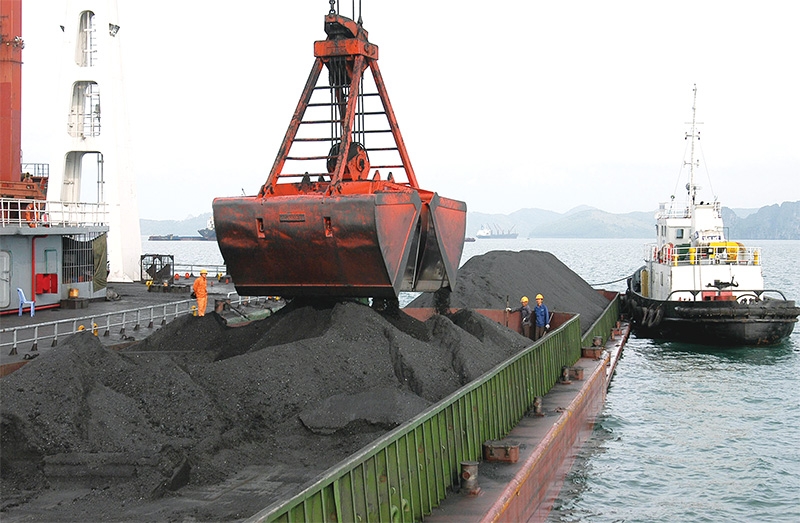Region’s states well-placed to offer steel alternatives
 |
| Some nations might get ahead in the race of coal and steel by exploiting trade tensions, photo Le Toan |
Adding to this is the sharp increase in prices of non-Australian coking coal, the fuel used to power furnaces that turn iron ore into steel. Due to the high demand, iron ore prices are climbing to $130-$150 per tonne, the highest level since 2014. As a result, Chinese steel companies are suffering losses, leading to a lack of crude steel for construction steel and hot-rolled coil in their nation.
Australia is the world’s biggest exporter of metallurgical coal, accounting for 55 per cent of the global supply. In 2019, Australia exported $64 billion worth of coal, with China being its second-largest customer.
In this context, Chinese steelmakers are now trying to replace Australian coal with imports from Russia, Mongolia, and Indonesia.
Coking coal is a key raw material in steel production, thus higher coking coal and iron ore prices will push those for steel even higher.
However, coking prices and a shortage in crude steel in China are presenting advantages to regional competitors, such as from Southeast Asia, who are now enjoying lower input costs and boosted exports to China – whose government’s massive spending on infrastructure and property is heavily reliant on steel.
Thus, as Vietnam’s leading manufacturer of construction steel, Hoa Phat Group has increased its steel billet exports to China, which now cover more than 70 per cent of the company’s total exports. In 2019, Hoa Phat exported 195,000 tonnnes of steel billets, mostly to China. In 2020, its export volume increased sharply – its first four-month export of billets to China and ASEAN countries reached more than 500,000 tonnes over the whole of 2019.
Other countries such as India will see steel prices inch up because of pressure of coking coal, bringing benefits for integrated mills such as Tata Steel Ltd., and Steel Authority of India Ltd.
India turned net exporter of steel to China for the first time in several years, with 69 per cent of semi-finished steel and 28 per cent of finished steel heading there between April and August.
Meanwhile, the Asian and global markets are still trading hot-rolled coil steel strongly as the material is used for the production of steel pipes, galvanised steel, and structural steel for domestic use and export. As a result, prices for this input material can reach as high as $600 per tonne in China.
Industry insiders said that steel from ASEAN countries is more economical for Chinese buyers but note that it remains a major challenge for the domestic industry to compete with China as domestic manufacturers’ production lacks diversity.
The global outlook for the steel industry is improving as recovery in key end-markets, such as automotive, manufacturing, construction, and infrastructure, and some other major markets will be driving the demand upwards in 2021, according to Fitch Ratings.
Chinese steel companies, many of which are state-owned enterprises, have ramped up production to an all-time high of 980 million tonnes in 2020 as fiscal stimulus measures supported infrastructure investment, while an accommodative monetary policy promotes real-estate investment.
In the rest of the world, economic stimulus measures were more moderate and steel production was lowered by more than 100 million tonnes to an estimated output of 745 million in 2020.
According to Fitch Ratings’ global steel report, the approval and deployment of vaccines against COVID-19 in Europe and North America, where the pandemic continues to disrupt societies and the steel sector, should reduce risks and lead to an expected output of 815 million tonnes in 2021.
What the stars mean:
★ Poor ★ ★ Promising ★★★ Good ★★★★ Very good ★★★★★ Exceptional
Related Contents
Latest News
More News
- Businesses ramp up production as year-end orders surge (December 30, 2025 | 10:05)
- Vietjet chairwoman awarded Labour Hero title (December 29, 2025 | 13:06)
- How to unlock ESG value through green innovation (December 29, 2025 | 10:03)
- AI reshapes media and advertising industry (December 29, 2025 | 08:33)
- FPT and GELEX sign deal to develop blockchain tech for global markets (December 29, 2025 | 08:29)
- Vietnam’s GDP forecast to grow by 9 per cent in 2026 (December 29, 2025 | 08:29)
- Women entrepreneurs are key to Vietnam’s economic growth (December 29, 2025 | 08:00)
- Vietnam's top 500 value-creating enterprises announced (December 27, 2025 | 08:00)
- The PAN Group shaping a better future with ESG strategy (December 26, 2025 | 09:00)
- Masan Consumer officially lists on HSX, marking the next phase of value creation (December 25, 2025 | 13:20)

 Tag:
Tag:





















 Mobile Version
Mobile Version